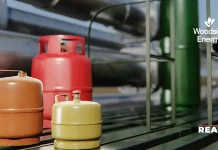Ethernity Networks, a leading network processing semiconductor technology company, announced it is offering access to a real 5G core network environment that includes the company’s 5G UPF Hardware Offload solution supported by leading integrator Tietoevry’s UPF toolkit and testbench. The environment enables telecom operators and system integrators to remotely access the setup to experience firsthand the possible performance improvements and CPU savings.
Also Read: Dahua USA Announces New Product Offerings Including the New Entry-level Thermal Hybrid Camera Series
Potential customers can connect directly to the setup, which sends data flows across the environment via Ethernity’s ACE-NIC100 FPGA SmartNIC, configured with PFCP commands originated by SMF. The ACE-NIC100 embeds the ENET Flow Processor semiconductor technology ported on the FPGA to handle the offloaded data plane from the server CPUs, accelerating the network function virtualization infrastructure (NFVI) via a unique containerized architecture that uses standard DPDK RTE_Flow APIs that are untied from the NFV and the driver. The result is dramatic improvement in UPF deterministic performance and a significant reduction in the CPU workload, resulting with lower server cost and power consumption.
By accessing the setup, users can experience how the ACE-NIC100 communicates with other containers of open source VPP with UPF software networking elements. The solution fully offloads the user plane traffic without changing the UPF NFVI application, releasing server CPU cores and reducing power consumption, enhancing scalability, and assuring deterministic performance. The setup also incorporates graphical and statistical representations of the performance in real-time to illustrate the power of offloading 5G UPF from server CPUs.
Oded Bergman, Ethernity’s VP of Product and Business Development said, “Ethernity’s unique containerized 5G UPF Offload solution assures carrier-grade UPF performance. It seamlessly integrates our ACE-NIC technology with any DPDK-based UPF NFVI, providing an extremely flexible and competitive UPF offering. The solution reduces software complexity and networking overhead, improves latency, and lowers the overall solution cost. It also paves the way to place UPFs at the network edge closer to end user locations. Now, thanks to this remote setup to our 5G Core environment, we invite 5G mobile operators and integrators to experience how to achieve better UPF performance in the shortest time-to-market.”




